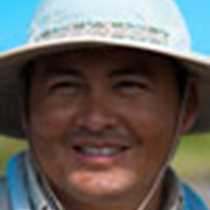Another day in the mysterious islands, as the Galapagos surprised us with their unique wildlife. This morning we were at Bartolome Island. This iconic part of the archipelago is one of the most visited by people all over the world. The volcanic landscape and the pioneer plants growing on its barren volcanic soil with recent lava flows made our early outing unforgettable. It gave us a deep understanding of the geology of the island as well as the process of founding. New organisms managed their way onto the island, surviving a long period of drought.
The famous landmark of Bartolome Island is its Pinnacle Rock, which is a rock that has been shaped by Mother Nature through its elements, water and wind. It was a tough walk to the summit of the island, but we were rewarded with the unique and bizarre landscape that made us feel like were in another dimension.
Later in the morning our guests had time to enjoy the north golden sand beach. Snorkeling, swimming and glass-bottom boating were the different activities available. The snorkeling reveled a mosaic of fish from different regions in the Pacific Ocean. Sea lions and penguins entertained our swimmers while others were more adventurous, trying free diving to explore underneath the boulders and in small cave formations. White tipped reef sharks and marble rays were found quiet in their resting places.
In the afternoon we headed to Chinese Hat Island. This small parasitic volcanic cone is located offshore of Santiago Island. A Zodiac ride was taken along the basaltic coastline. Recent lava, no more than one hundred years old, provides an excellent shelter and nesting site for the most northern penguin in the world. Galapagos penguins were sighted in the water as well as perched on the rocks as they just came back from fishing. Sea lions and marine iguanas were also big attractions on this outing. Few birds such as pelicans, hawks and frigate birds were soaring over the lava field that was covered with some candelabra cactus. The day ended with an amazing sunset as we headed back to our floating home, the National Geographic Endeavour.




